Pelargonium Bold Gold: all about growing a flower
Pelargonium (kalachiki) - one of the most popular flowers among the people. For many decades, it has been decorating the window sills of houses; in the summer it is grown on balconies and flower beds. Now in the arsenal of florists there is a huge number of species and varieties. They differ in size, color and shape of leaves and flowers. Bold Gold belongs to the dwarf zoned.
Content:
Description of the variety
Dwarf pelargoniums form a small rounded bush, which is decorated with a large number of bright bouquets. One of the brightest representatives of this species is the Bold Gold variety. The height of the bush is up to 30 cm.
The variety belongs to zonal pelargoniums. The trunk is branched, the leaves are yellow-green, golden. Under the bright rays of the sun, a dark orange stripe forms on them, dividing the leaf into zones in the form of concentric circles. There are many flowers, they are large, double, collected in dense inflorescences-umbrellas. The color is salmon, with a barely noticeable purple border along the edge of the petals.
Pelargonium Bold Gold blooms from early spring to late autumn.
The bush is formed without the intervention of the owners. But you can help him quickly take a beautiful shape. Pinch the sprout after the fifth pair of leaves. After that, shoots will begin to grow faster and flowers will form. In the fall, the bush is cut off, leaving several leaves on each stem. If the bush has stretched out strongly over the winter from insufficient lighting, it again shortens the branches by a third of the length. For the winter, pelargonium needs to be hidden in the house. After all, the plant, whose homeland is Africa, does not withstand sub-zero temperatures.
Reproduction
The new Bold Gold pelargonium bushes are grown:
- From seed
- Cuttings.
Small seeds pelargonium usually have good germination. They are sown in mid-February on moist soil. Sprinkle with a thin layer of earth. Moisten, cover with glass. Install in a warm place. In two weeks, seedlings will begin to appear. Remove the glass, lower the temperature. After several pairs of real leaves appear, they dive into boxes or separate cups. After a couple of months, they are transplanted into pots.
For reproduction of pelargonium by cuttings, the apical shoots about 6 cm long with several leaves are cut off. Withstand for about an hour, until the cut dries a little. Planted in a pot of soil. Some growers advise covering the cuttings with glass or plastic bottles. In a couple of weeks, the roots will appear.
Many people prefer to root the cuttings in a glass of water.
It is poured in a small amount, do not change, but only add water. When the roots appear, they are planted in a prepared dish. One of the main conditions for a long and abundant flowering of Bold Gold is a small pot. If the roots are spacious, then the pelargonium will grow branches, and it will bloom worse.
The soil is prepared nutritious, neutral acidity... You can take in equal parts of humus, leaf and sod land, and sand. If the soil is loose, sand is put in 2 times less.
Pelargonium care
Bold Gold, like any zonal pelargonium, is undemanding to care for. The plant is installed on the south or east windows. They even tolerate direct sunlight well. The flowers will be larger and brighter than on northern windows or in the shade.And the border on the leaves becomes more noticeable under their influence. In late autumn, when the amount of sunlight is insufficient, they light up phytolamps... At the same time, zonal pelargonium is less demanding on illumination than royal.
Periodically, some leaves of pelargonium turn yellow and die off. So that they do not spoil the appearance, remove them. Faded flower stalks are also plucked so that they do not take away the strength from the flower. An exception is growing seeds for reproduction.
Watering in spring and summer is plentiful, daily; in autumn and winter, it is reduced. The interval between watering is 3 days. Especially when pelargonium hibernates in a cool room. The soil should dry out a little between waterings. But overdrying over two days can be detrimental to the plant.
Spraying the leaves of pelargonium Bold Gold is not carried out, they are covered with small villi, so the accumulation of moisture can lead to their decay.
A rest period for Bold Gold pelargonium is optional. It can be grown all year round at 20-25 ° C. Pelargonium Bold Gold is regularly fed mineral fertilizers for flowering plants. They contain a lot of potash and phosphorus fertilizers. In spring and summer, it is brought in after 2 weeks, in the cold season - once a month. Nitrogen is not necessary, because the flower does not need to grow in height.
Transfer
Pelargonium is usually transplanted for the first time 2 weeks after being brought from the flower shop. Flowers are sold there in transport soil. It's overflowing with fertilizers and stimulants. In such soil, a flower cannot live long.
Transplant features:
- Prepare a small pot, lay a drainage layer.
- Take out the previously watered plant from the pot, shake off the roots from the old earth.
- Examine the root system. If damage is noticed, remove it and sprinkle it with charcoal.
- Placed in a pot on a layer of expanded clay, covered with soil.
- Fill in the rest of the soil without ramming.
- Water so that the soil fills the gaps between the roots.
- Do not feed until the plant grows.
If the purchased plant was planted in high-quality soil, you can not replant it or change the pot using the transshipment method. In this case, the flower is transferred to a new container along with the soil.
Diseases and pests
Pelargonium Bold Gold may be affected aphids, whiteflies and spider mites. You can deal with them by processing insecticides... Treat all flowers that grow in the room and can also be affected.
The main disease of Bold Gold pelargonium is black leg lesion. Its pathogens are transmitted through the soil, and weakened plants in a humid environment get sick. Can be treated with Fitosporin or others fungicides.
To prevent disease, the soil must be disinfected, frozen, calcined in the oven or spilled with boiling water before planting.
With frequent abundant watering, the roots of pelargonium can rot. In this case, the leaves are filled with moisture. It is urgent to transplant the flower into a new pot or prepare cuttings for propagation, and discard the plant. It all depends on how affected the roots were. If they are black and soft, then it remains only to discard, and if the lesion has covered an insignificant part of the roots, they are treated.
They clean the roots from the soil, carefully examine. Remove damaged parts, disinfect. You can use a solution of potassium permanganate or sprinkle the cut with crushed charcoal. If the leaves turn yellow from below, this indicates a lack of moisture. The red edges of the blades indicate that the room temperature is low.
Usage
main destination pelargonium - decorate buildings and courtyards. Can be planted in the foreground in flower beds or create compositions with other potted flowers.
In addition, the smell of pelargonium refreshes the room.Phytoncides found in the leaves and other parts of the plant kill pathogens. Therefore, they are put in jars of jam so that mold does not start.
And the smell, although not everyone likes it, helps to get rid of depression.
Pelargonium leaf oil is used to treat dermatitis and other skin conditions. It helps with burns. Pelargonium leaf preparations are used to increase blood clotting. Decoction gargle with pharyngitis.
More information can be found in the video:



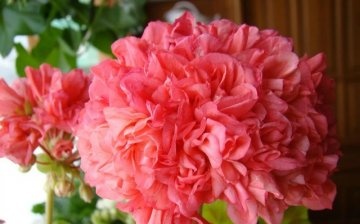
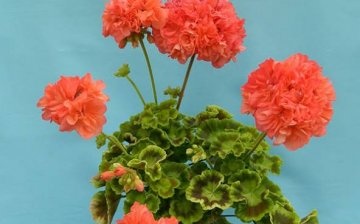
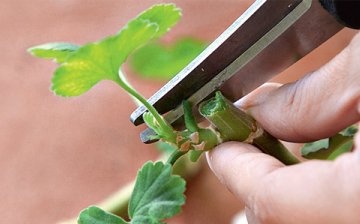
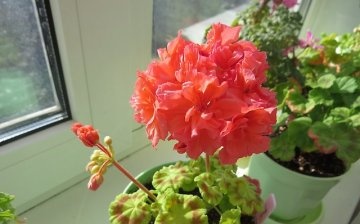
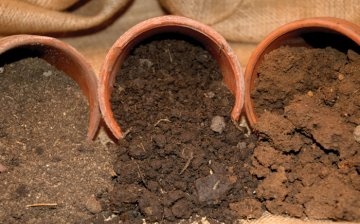
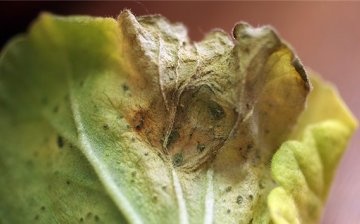
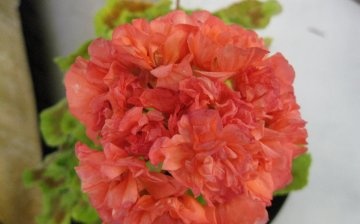







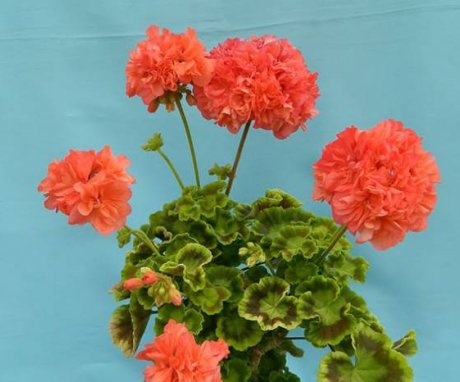
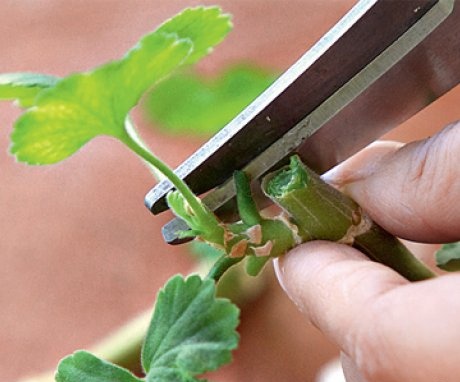
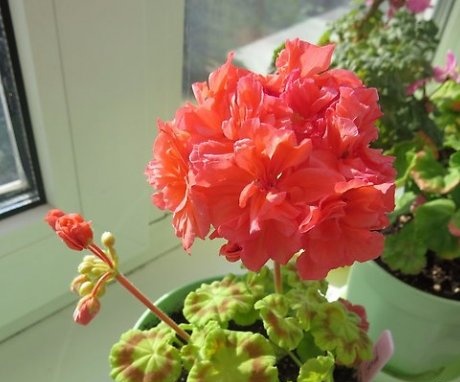
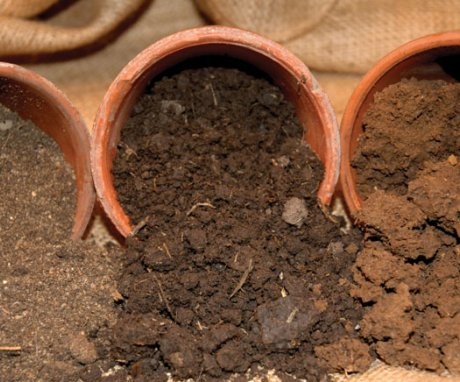

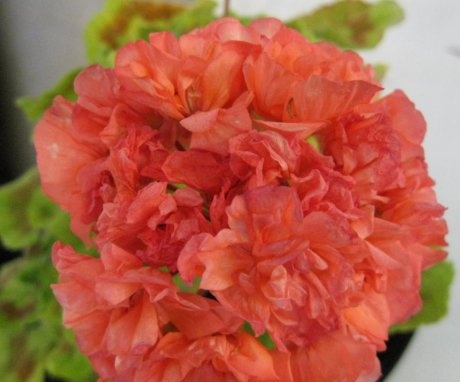
Many consider pelargonium to be a grandmother's flower, but I really like it - it is unpretentious, blooms beautifully, a variety of shades, and can be easily bred by cuttings. I believe geranium improves home energy.